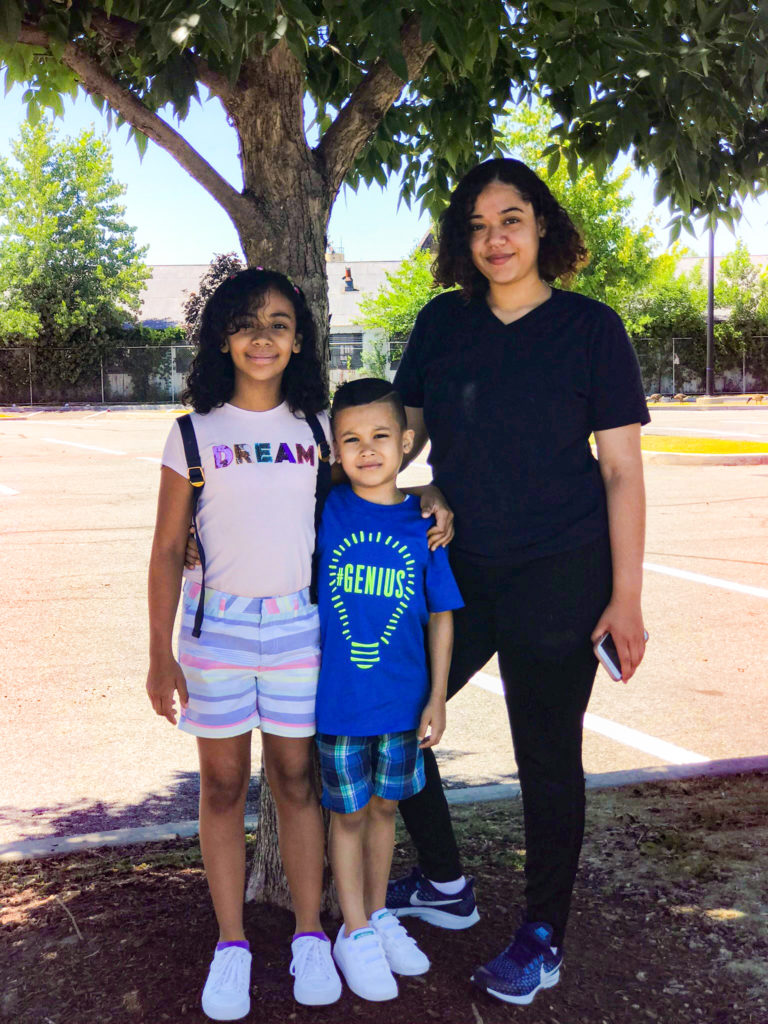
In the days leading up to the first school bells sounding, I was busy buying back-to-school supplies, lunch items and organizing weekly schedules. However, there’s one additional step I take every year along with most parents that have children battling illnesses—like sickle cell disease.
During meet-the-teacher night, I greet my son’s teacher with a smile and a folder full of resources. Aaron, whom we affectionately call AJ, is eight years old, entering the third grade and living with sickle cell disease. Most times he’s the only student at his school with sickle cell disease. As his mom, I feel better knowing that his teachers and administrators know about his disease and potential signs of a health crisis, in case he begins to suffer from one at school. My motto is, “If you don’t know, get educated!”
Sickle Cell Disease is Rare in the Latino Community
Of our three children, AJ is our youngest and only child with sickle cell disease. To us, our boy is happy and normal, but I would be remiss if I didn’t acknowledge that he is in a rare population of 1 in 16,300 Latino children born in the U.S. with sickle cell disease.
This disease causes red blood cells to become hard and crescent-shaped instead of soft and round. As a result, blood has difficulty flowing smoothly and carrying oxygen to the rest of the body. When the body becomes deprived of oxygen it goes into a sickle cell crisis, which can lead to severe pain, tissue and organ damage, acute anemia and even strokes.
My husband and I both carry the sickle cell trait. I am originally from the Dominican Republic and he is originally from Ecuador. We knew there was a possibility that our son would inherit the disease, but it did not make the news any easier to swallow.
Coping with Crisis
AJ takes medication to help prevent a crisis, but in the back of my mind I fear that he will one day begin to suffer from the horrible and damaging side effects many labels warn about. Instead, I prefer that he receive lifesaving blood from generous blood donors to treat a crisis. It’s the most natural form of relief, that cannot be manipulated or manufactured, but leaves AJ dependent on volunteer donors to give.
My son is such a good boy and receives blood transfusions with no complaints or tears. He was born into this and needles don’t scare him one bit. Within minutes of receiving a blood transfusion, I watch his strength restored, pain vanish and energy return—soon he transforms back to himself—a rambunctious little boy. If an eight-year-old can withstand a needle, so can you.
In the U.S. about 100,000 people of various racial and ethnic backgrounds are living with sickle cell disease, most of whom are of African or Latino descent. A patient in need is more likely to find a compatible blood match from a donor of the same race and ethnicity.
A blood donation from a diverse donor can help tremendously as students battling sickle cell disease go back to school this year and fight crises. My son and so many sickle cell patients are relying on your generosity. Schedule your blood donation through the American Red Cross today and play your important part in ensuring diverse blood is available for sickle cell patients in need.
Parenting a Student with Sickle Cell is Tough
Although AJ looks healthy and bright eyed, there are challenges that he might encounter that his classmates will not.
He misses between three and five weeks of school each year due to complications from a crisis. It’s hard for him to miss field trips or fun school events. We’ve tried to recreate the experience when he’s feeling better, but it’s not the same. During longer absences he complains about missing his friends and sadly, I can’t provide much of a solution. I can only hope that he feels better soon enough to get back to school.
As a protective parent, I don’t allow AJ to go back to school until I know he’s 100% healthy. Sitting on hard seats and climbing flights of stairs can be unbearable when he is going through a sickle cell crisis. Although they try their best, a teacher can’t give him undivided attention like my husband and I can at home. Plus, I know he hates experiencing pain in front of his friends.
Our family has become outspoken advocates for sickle cell disease awareness, and we encourage AJ to participate in some sickle cell events. I want him to always know that although he is 1 in 16,300 Latinos born with sickle cell disease he is not alone. There is a community of people willing to donate lifesaving blood to treat sickle cell disease and his mom is his fiercest supporter.
